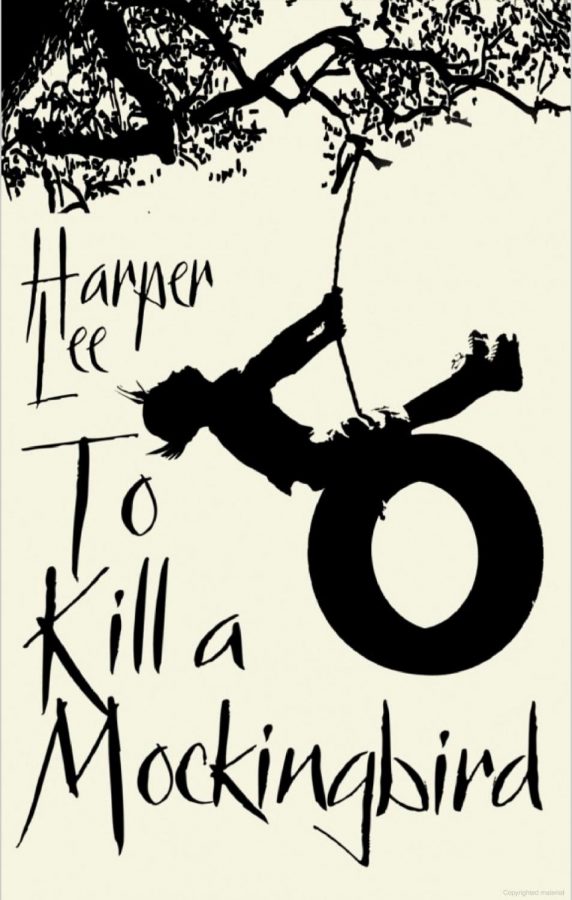A Timeless Lesson on Morality
‘To Kill a Mockingbird’ book cover. The story is set in the mid-1930s in the small town of Maycomb, Alabama. It is narrated by Jean Louise Finch, an unusually intelligent girl who lives with her father Atticus and her ten-year-old brother Jem.
“Shoot all the blue jays you want, if you can hit ’em, but remember it’s a sin to kill a mockingbird.” Drawing on her own childhood and experience, Harper Lee uses a child’s innocence to portray the idea of right versus wrong and expose a moral message. Published in the 1960s, just before the peak of the American Civil Rights Movement, the book provides a profound approach to morality. How to Kill a Mockingbird remains a staple of high school and college reading lists, beloved by millions of readers worldwide for its appealing depiction of childhood innocence. Its scathing moral condemnation of racial prejudice and its affirmation that human goodness can withstand the assault of evil make it a must-read.
How to Kill a Mockingbird is meaningful no matter when or under what circumstances it’s read in. The message represented by the protagonist, Atticus Finch, should be understood among the midst of all the modern global conflicts that we hear of every single day. The author’s tone, use of imagery, and all the powerful messages make the novel incredible. In order to provide a smooth approach to the characters and draw the reader’s attention towards the novel, Lee uses a unique visual and fluid style. By combining the narrator’s voice of a child observing her surroundings with a grown woman’s reflection on her childhood (flashbacks), the author manages to intricately play with perspectives. This narrative method allows Lee to portray the beauty of innocence through the combination of the simplicity of childhood observation with adult situations complicated by hidden motivations and unquestioned tradition. A similar strategy can be witnessed in Margaret Atwood’s Handmaid’s Tale, where Offred, the main character, is the narrator. Atwood’s incorporation of flashbacks and a dark tone allow the dystopian novel’s scenes to come to life. Yet, Lee’s piece seems to flow more due to the match between its tone and the messages it transmits, making it a piece that suits a wider audience. Nonetheless, being told from a “white’s” perspective could make some question its worth, especially by the victims of racism.
Moreover, the book teaches wonderful lessons about tolerance, justice, racism, and prejudice. By talking about situations that occur in the real world and making the characters realistic, this book makes the reader feel part of the story and receive every message in the form of a feeling; empathy. Although the book is all based on a certain historical time or event, it significantly affects the way people today see racism and discrimination, as it proves the impact of this issue on society and how harmful and real it is. In the book, this is achieved because readers are put into the character’s shoes and see racism through his eyes. Comparably, John Grisham’s A Time to Kill, also emphasizes justice and racial prejudice. However, Grisham develops this theme in a much more positive manner, meaning that most of the ideas are focused on justice and the gray area between the lines of black and white set by the law. On the contrary, Lee takes this theme far beyond and seeks to explore the moral nature of human beings, and often finds a way to dramatize and explain this through human evolution and harsh stories, which can be interpreted as too cruel, and manages to bring the characters to life.
More profoundly, Lee’s unique style is reinforced by her amazing use of symbolism and imagery throughout the novel, a key element to drawing every reader’s attention. Her ability to describe certain scenes and give a double meaning to most of the events she narrates makes the book stand out from all others. For example, to illustrate the superficiality of skin color, Lee presents a scene where Jem is making a snowman. As he forms the snow into a ball, he rolls it to add more snow. While rolling the snowball it gathers up dirt, giving the snowman a dirty surface. Likewise, books such as Gabriel Garcia Marquez’s One Hundred Years of Solitude undeniably contain amazing descriptions and great use of symbolism and imagery. The thing is, Lee’s ability to make her descriptions, tone, theme, and messages connect makes this book a perfect puzzle that can change a worldwide perspective when completed.
Due to its creative style, detailed descriptions, and powerful lessons, Harper Lee’s How to Kill a Mockingbird is more than just another historical-based narrative. Instead, it’s a must-read that allows the reader to step into the characters’ shoes and understand the world through the lens of innocence. As Lee states, “You never really understand a person until you consider things from their point of view… until you climb into his skin and walk around in it.”




